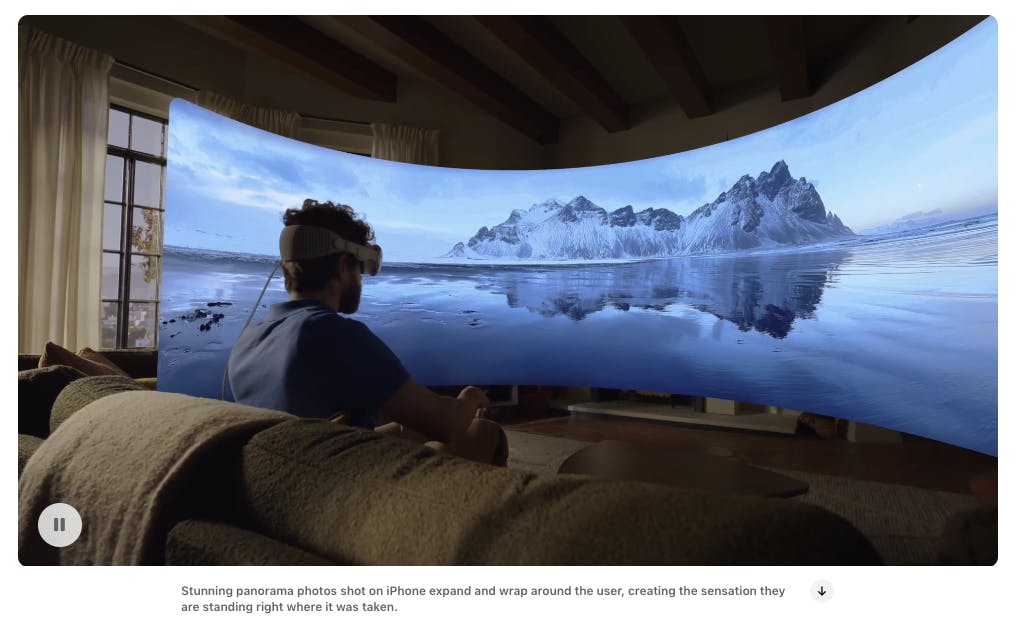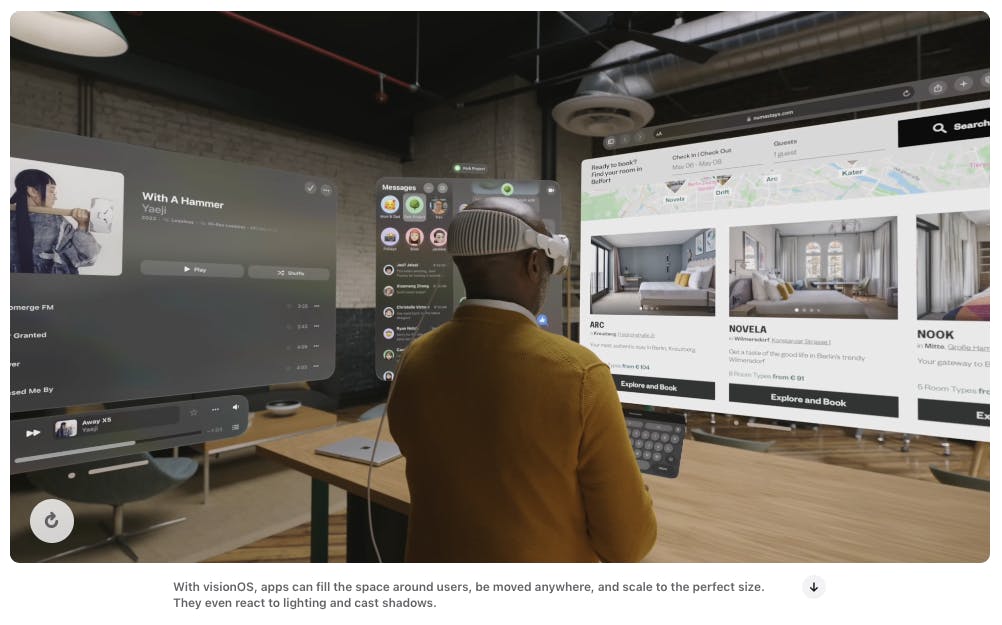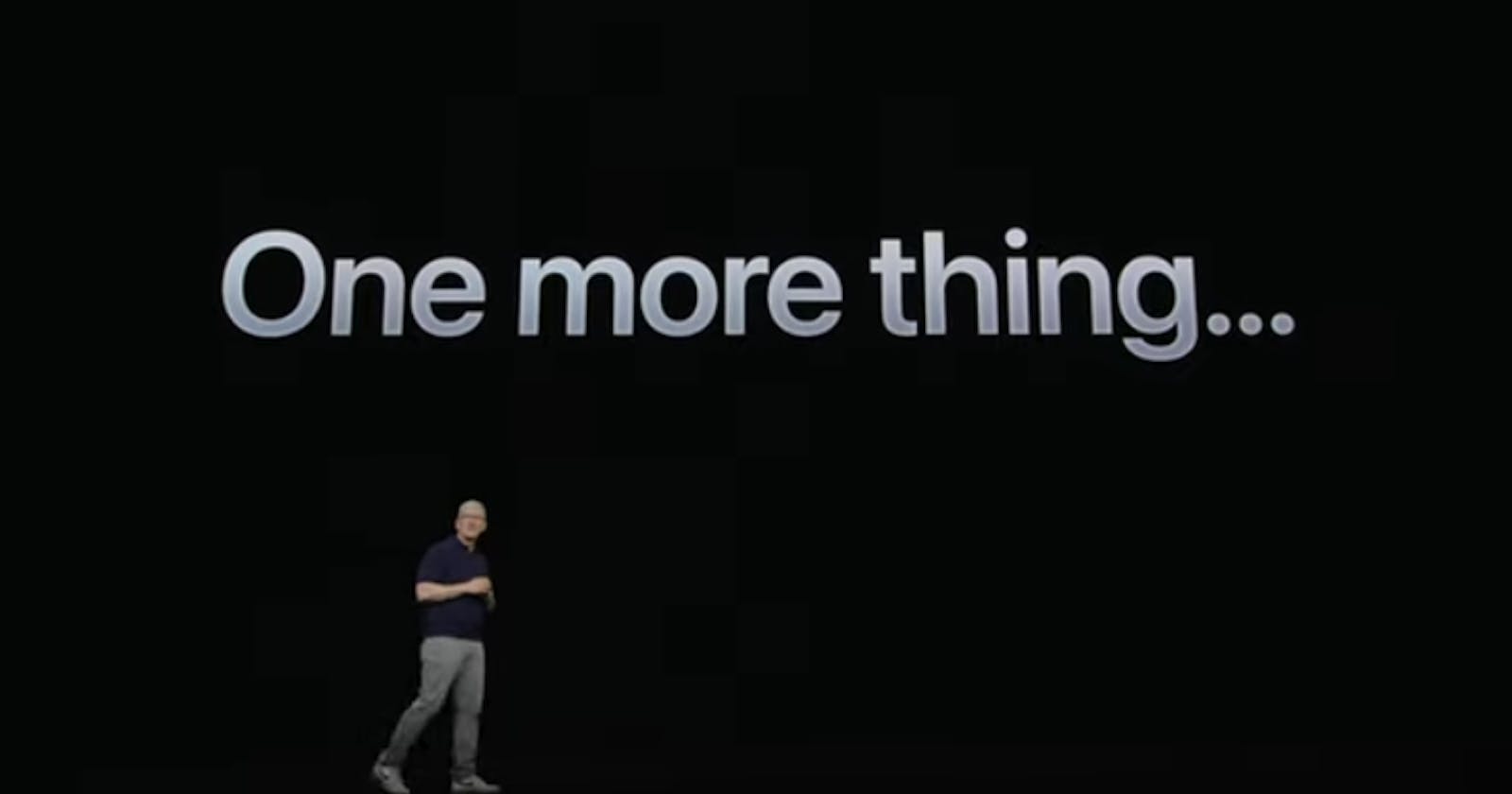The only thing that anyone in tech can talk about today is the launch of Apple's Vision Pro, its' first new device in years. It's widely known that Apple is legendary at marketing; and in fact shamelessly copying them has become a meme, and it is probably unwise to copy-and-paste the playbook for an industry-leading company to use for the average devtools startup struggling to stand out in a sea of Who Cares.
However.
I do think that there are real extractable lessons that I'd like to discuss, that even if they aren't quite applicable to you at your current stage, we can still think about to understand human nature and how to prime the pump for a product launch.
Superficially, you can steal their tactics:
45 minute keynote from CEO and partners for closest nerds
9 minute polished video for mass consumption
Extremely slick landing page
Well crafted press release
Media partners across Techcrunch and the Verge
But what I'm really interested here is the principles that you can use to craft your own launch.
Rule 5: Leak 20% of the details that make up 80% of the takeaway
Everyone going in knew that 1) Apple was launching a headset, 2) it was going to be launched at WWDC, 3) it was going to be roughly $3000. When you have a rumor mill, you can use it to your advantage rather than fighting it:

Because the date is well known, the product is highly anticipated, and the bloggers were given just enough detail to run wild with speculation:
Apple earned a lot of free publicity with speculators trading rumors and predictions
This recruits the tech press to help publicize the main thing you want to make known - the exact date you are launching your new product
This leads the tech press, your customers, and your competitors to clear their schedule for you - the press especially appreciates these kinds of well telegraphed events, because it is guaranteed to be newsworthy but they can prep their takes well in advance rather than doing the mad rush to be first to print. This enables them to do things like historical comparisons for you.
Even Zuck's clumsy attempt to "front run" WWDC with a preannouncement of Meta Quest 3 merely served to draw more attention to the fact that it was motivated by the arrival of their most significant competitor.
But because you leave out key details like the 3D personas, the pixel count, the fancy new custom chip, there is still enough new meat for the fanboys and girls to obsess over on the day of the announcement.
This all comes down to a ruthless 80/20 calculation - start with what the average person will remember for mass distribution, then open up rabbit holes for the nerds and geeks to fanboy over on the launch.
Rule 4: Not your words, not your destiny
There is no mention of AR, VR, MR, XR, or, thank goodness, the metaverse, to be found on the announcement. Instead, it is "spatial computing":

The heck is spatial computing? It is whatever Apple says it is, not that old stuff you may have heard from Zuck or Palmer Luckey or Neal Stephenson.
Oh and have you ever cared about the internals of the Meta Quest 2?
Apple plonked an M2 chip in there, and a brand new R1. Yet more opaque lore and jargon for nerds to feel just sufficiently educated about the tech, without actually knowing anything about how any of it works:

Apple is no stranger to calling things by their own name. LG, Samsung, Dell, IBM, and everyone else may have high resolution "QHD" (Quad HD) screens (which typically refers to a display with a resolution of 2560x1440 pixels), but only Apple gets to say they have "Retina" screens.
In devrel/devtools this is most closely aligned to Category Creation. This can of course backfire on you if you try to skate too far ahead of where your audience is and fail to make a strong case for why they should care. Prisma spent years saying it was not an ORM before finally caving into its own users and putting ORM on its landing page. I have more thoughts on effective devtools Category Creation that I can't publish until I have done it one last time, but you can see examples of this in my prior category creating posts on Self Provisioning Runtimes, The End of Localhost and The Third Age of JavaScript.
Rule 3: Demonstrate ideal usage
Monkey see, monkey do.
People will think about your product the way that your demos show them being used.


Here, Apple demonstrates is intended for mostly solitary, stationary use.
Studiously avoid dystopian photo ops:

Rule 2: Recruit Influencers
People who people trust.
Try to avoid the ones that will break Rule 3 for you though:

Rule 1: Make People Dream
This is important - far more people will see your announcement than will actually try out your product.
Make an aspirational first impression.
This does mean that, to some extent, when you are given the choice between presenting the full picture of what you have today vs what it could be in the most ideal scenario, you should choose the happy path. The downside of this is that it could be viewed as overpromising and underdelivering. This is a fine line - overpromising in the short term is fine if you can deliver the goods in the long term. Nobody wants an industry full of vaporware and overhyped demos, but if you do not make your level best effort to show the future that you want and recruit early users and employees to join you in that journey, then you are also doing a disservice to the mission of your company.
In short - get people excited with where you think you can go, and ship as much as possible to fulfil that promise.
That's it?
Actually, no, there's One More Thing...
Rule 0: Be Patient
Wait til it's Good.
Zuck did the "lean" (ironic air quotes here) startup thing and launched a new version of the Quest every few years. Apple waited 7 years since their last major platform launch (Airpods and Apple Watch) to get it right:
This is probably the one greatest advantage that Apple has over basically everyone else in tech - they have the reputation and money and people and time to get things right, even if other companies get there first. Startups, unfortunately, do not have this luxury. However, I do feel this pain when I get asked by a founder if they should launch something every month or even every quarter. It's the wrong question; and often why I also don't care about content calendars and other bean counting forms of developer relations.
Answer the real question: Are you making good things people want?
